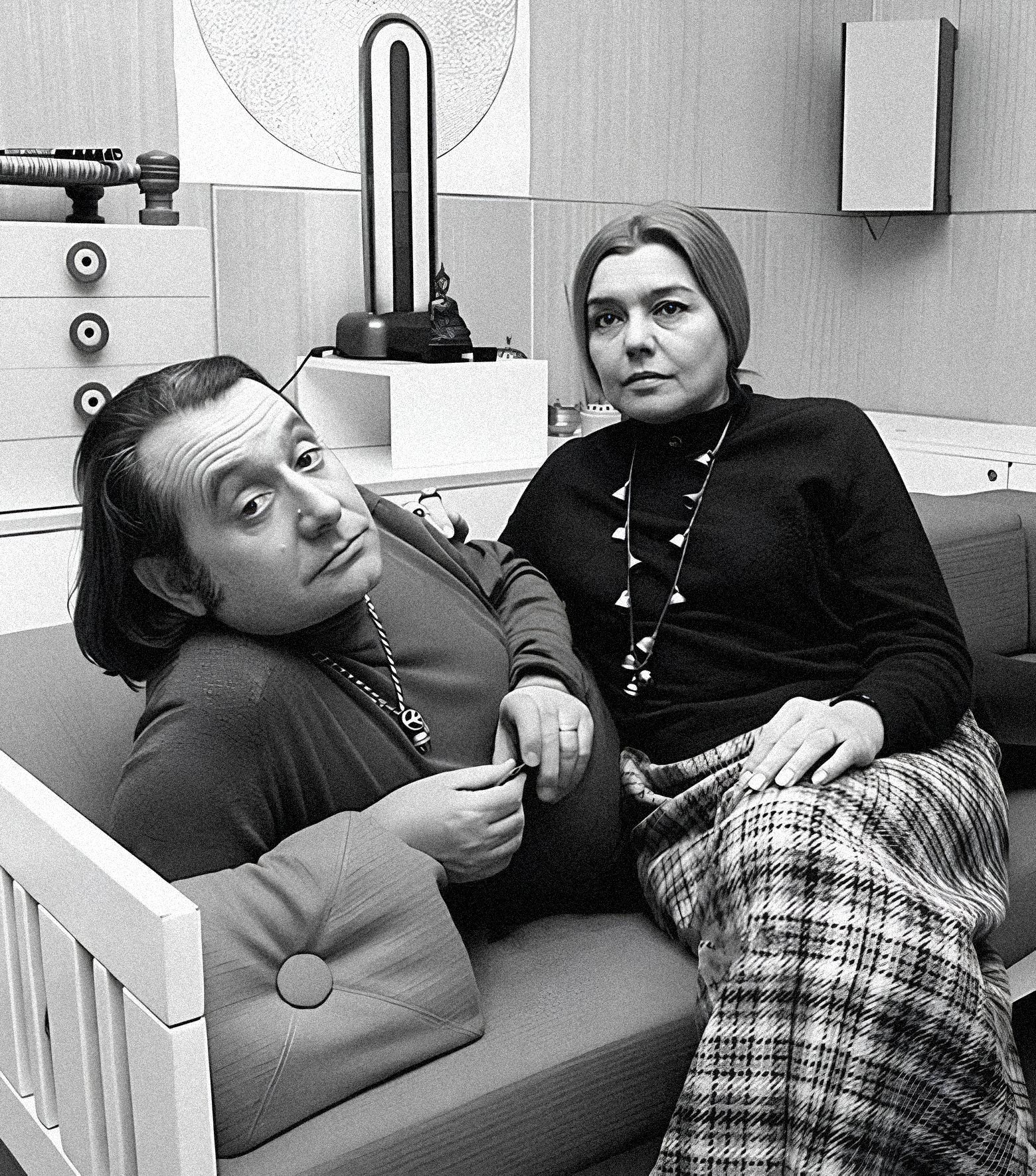Nask
Nask
Nask

Italy’s resurgence as a global aesthetic powerhouse
How Italy's contribution to design reaches new heights of global influence in this new decade
—The life of a designer is a life of fight, fight against ugliness.
In a world increasingly driven by aesthetic appeal and cultural richness, Italy has re-emerged as a leading force in design, art, architecture, and lifestyle. This renaissance raises compelling questions: Why is Italy back at the forefront of the global aesthetic movement? How does its resilient culture shape its innovation? And why do its historical masterpieces continue to influence the world today?
A Resilient Cultural Heritage
Italy’s resurgence is deeply rooted in its resilient culture. This resilience is not merely a survival instinct but a creative force that continually redefines and revitalizes its cultural expressions. Italy’s aesthetic influence can be traced back to the Roman Classical Era, a period that laid the foundations for Western architecture, art, and engineering. The monumental structures of ancient Rome, from the Colosseum to the Pantheon, embody principles of grandeur, symmetry, and innovation that have influenced architectural practice globally for centuries.
—Italian designers, architects, and artists engage with this rich historical heritage, allowing it to shape their creative processes, serving as a philosophical ground from which new and groundbreaking ideas take form.
Following the classical era, Italy experienced the transformative movements of Humanism and the Renaissance in the 15th and 16th centuries. Marked by a rediscovery of classical art, harmony, and the centrality of the human experience, these periods produced some of history’s most celebrated artists, thinkers, and architects, whose works remain timeless references for beauty and intellectual depth. From the dynamic emotion of Baroque in the 17th century to the return to classical simplicity in Neoclassicism, Italian culture has long been a source of global inspiration.
The Spin of Italian Innovation
The heart of Italian innovation beats in its seamless blend of tradition and modernity. Italian designers, architects, and artists draw from this profound historical context, using it as a launching pad for cutting-edge innovation. This unique spin on creativity ensures that Italian contributions to design, architecture, and art are not only beautiful but also deeply meaningful. Cities like Milan, with its iconic design week, Venice, with its celebrated Biennale, and Florence, the cradle of Renaissance architecture, act as crucibles for this innovative spirit, attracting global talent and attention.
The cultural revolutions born in Italy throughout the centuries continue to resonate today. Movements like Futurism in the early 20th century, which exalted modernity, technology, and movement, influenced artists across Europe and South America. The Metafisica movement, with its enigmatic, dream-like compositions, paved the way for Surrealism, particularly in France and Belgium. Even later, the Arte Povera movement in the 1960s, which challenged traditional concepts of art by using raw, everyday materials, found resonance globally, especially in the United States.
Icons of Italian Design and Architecture
Italy’s influence over the past century can be traced through its most influential designers, architects, and brands, whose works span a range of industries from furniture and fashion to motors, craftsmanship, and architecture.
In architecture, names like Gio Ponti, Carlo Scarpa, Renzo Piano, Aldo Rossi, and Massimiliano Fuksas have cemented Italy’s global influence. Ponti’s Pirelli Tower in Milan remains a landmark in modernist architecture, while Scarpa’s minimalist beauty, seen in works like the Brion Cemetery, fuses history with modernity. Renzo Piano, globally renowned for structures like the Centre Pompidou in Paris and The Shard in London, continues to showcase Italy’s ability to create spaces that blend innovation with elegance. Aldo Rossi’s poetic urban designs, and Fuksas’s bold, contemporary works like the Nuvola in Rome, reinforce Italy’s reputation as a leader in the field of architecture.

Italian design, too, boasts names like Massimo Vignelli, who shaped modern graphic and industrial design with his iconic work on New York’s subway map and his “less is more” philosophy. Figures like Ettore Sottsass and Achille Castiglioni left indelible marks on furniture and industrial design, with their creations combining functional precision and aesthetic grace. Sottsass’s work with the Memphis Group redefined the rules of design in the 1980s with its colorful and unconventional forms, while Castiglioni’s iconic Arco lamp and other designs epitomize a harmony between form and function.
In the automotive industry, brands like Ferrari and Lamborghini continue to set global standards in luxury and performance, while Pininfarina‘s design house has become synonymous with the sleek, sophisticated beauty of Italian engineering.
In fashion, Italy remains a powerhouse with brands like Gucci, Prada, and Versace. These names are synonymous with high fashion, craftsmanship, and innovation. Designers like Giorgio Armani and Miuccia Prada have consistently pushed the boundaries of fashion, setting global trends and standards.
Italian craftsmanship extends to glass and leather as well, with brands like Murano for glass and Bottega Veneta for leather goods. The intricate artistry and quality of Murano glass have been celebrated worldwide, while Bottega Veneta’s leather products are coveted for their craftsmanship and timeless design.
The Excellence of Italian Food
The Italian food industry stands as a testament to the nation‘s capacity for innovation and influence. From small, local enterprises to major industrial phenomena, Italy’s food sector continues to invent and demonstrate great vitality. Italian cuisine, revered globally for its flavors and quality, benefits from a rich heritage of culinary excellence combined with a modern approach to food production and gastronomy. Movements like Slow Food, founded by Carlo Petrini in 1986 as a reaction to fast food, have promoted sustainability and the preservation of local traditions. Global brands like Eataly have redefined how Italian food is distributed, bringing a combination of high-quality products and culinary culture to the world.
The Backbone of Italian Industry
Remarkably, much of Italy‘s design, architecture, and industrial excellence thrives despite minimal state support. Italy’s strength lies in its small and medium family businesses, driven by an ancient know-how in craftsmanship and commerce. These businesses often sell directly to global markets, leveraging a network of Italian citizens who have left the country yet maintain strong ties to their homeland, as well as those with Italian roots who continue to identify strongly with Italy. This diaspora, combined with Italy’s deep cultural pride, helps to sustain and promote the nation’s global influence.
—Italy’s design, architecture, and industrial excellence thrive not through state support, but through the enduring strength of family-run businesses, ancient craftsmanship, and a global diaspora that sustains its cultural and commercial influence.
This global network ensures that Italian design, fashion, architecture, and food continue to inspire. Whether through the influential names of the past century or modern innovators, Italy’s excellence has consistently been nurtured by the vitality of small, independent enterprises that embody the spirit of the country.
Italy’s Timeless Influence
Italy’s aesthetic resurgence is a testament to its enduring cultural vitality and innovative spirit. The country’s ability to continuously draw from its rich heritage while embracing modernity ensures its position as a global reference in the arts, design, architecture, and lifestyle. As the world looks to Italy for inspiration, it is clear that the nation’s influence is not just a revival but a powerful and enduring presence in the global creative landscape.
From the masterpieces of the Roman and Renaissance eras to the cutting-edge designs of today, Italy’s cultural influence remains unmatched. It is a nation where ancient artistry meets modern innovation, and where small family businesses can spark global trends. As Italy continues to lead in design, architecture, art, lifestyle, and food innovation, it proves that true creativity and excellence stem from the ability to adapt, inspire, and endure through the ages.